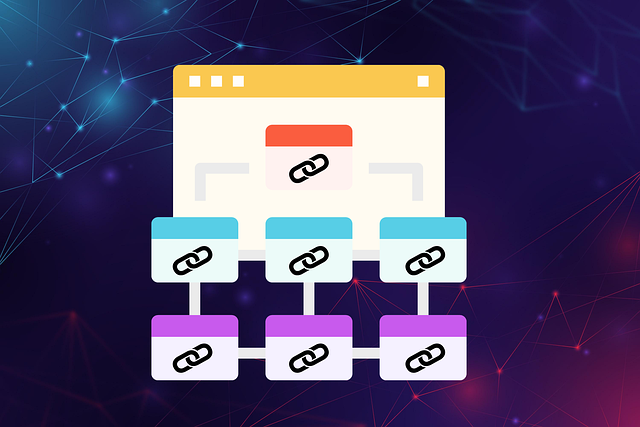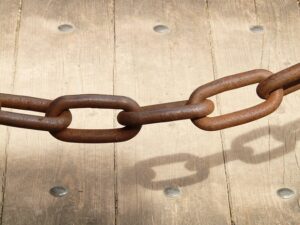Internal linking is a critical SEO strategy that connects pages within a website, improving user experience and search rankings by distributing "link equity." Using a link equity distribution tool, you can identify and fix broken links, optimize redirect errors, and strategically allocate link juice to important pages. This enhances site structure, boosts page authority, and increases organic traffic. Begin with a thorough audit, prioritize fixing impactful issues, and follow the tool's tutorial for precise changes, ultimately achieving better SEO performance through optimized internal linking.
Struggling with internal linking issues that hinder user experience and SEO? Discover how a powerful link equity distribution tool can be your site’s salvation. This comprehensive guide delves into the crucial aspects of internal linking, from its impact on search engine rankings to its effect on user navigation. We’ll explore strategies for identifying broken links and leveraging link equity distribution to optimize your site structure, ultimately driving better performance.
- Understanding Internal Linking and its Impact on SEO
- Identifying Broken Links and Their Effects on User Experience
- The Role of Link Equity Distribution in Optimizing Site Structure
- Features and Benefits of a Link Equity Distribution Tool
- Step-by-Step Guide to Using the Tool for Effective Link Fixing
- Real-World Success Stories: How the Tool has Helped Websites Improve Their Internal Linking
Understanding Internal Linking and its Impact on SEO

Internal linking is a cornerstone of search engine optimization (SEO) that often goes overlooked until issues arise. It involves creating a network of links within your website’s pages, guiding users and search engines from one relevant page to another. This strategy has a profound impact on both user experience and SEO performance. When executed effectively, internal linking helps distribute what is known as “link equity” across your site. Link equity distribution tool features can assist in identifying weak or broken links, ensuring that this valuable resource is allocated efficiently.
Proper internal linking acts like a roadmap for search engines, making it easier to crawl and index your website’s content. It signals to search engine algorithms that your site is well-organized and offers a positive user experience. Moreover, it can significantly impact your site’s rankings by improving page authority and helping to pass on “link equity.” This process ensures that the link juice from incoming links is distributed across all pages, enhancing overall SEO performance and making your website more competitive in search results.
Identifying Broken Links and Their Effects on User Experience

Identifying broken links is a crucial step in optimizing your site structure and enhancing user experience. These links can lead to frustrating experiences for visitors, causing them to exit your site quickly. A link equity distribution tool can help uncover these issues by scanning through your internal links and flagging any that are broken or redirecting to error pages. This tool provides valuable insights into the current state of your site’s navigation, allowing you to address problems promptly.
Broken links negatively impact both user satisfaction and search engine optimization (SEO). When a link is broken, it disrupts the flow of link equity distribution strategy throughout your website, which can reduce the overall authority and performance of individual pages. By fixing these issues through a systematic approach, such as following link equity distribution tips provided by SEO tools or creating a tutorial for internal linking best practices, you ensure a seamless user journey and improve your site’s visibility in search results.
The Role of Link Equity Distribution in Optimizing Site Structure

Link equity distribution plays a pivotal role in optimizing site structure and enhancing overall search engine performance. Each internal link on a website passes along ‘link equity’ or ‘link juice’, which influences how much authority is passed from one page to another. Efficient link equity distribution ensures that important pages receive adequate support, boosting their relevance in the eyes of search engines. This, in turn, can lead to better rankings and increased organic visibility.
Using a link equity distribution tool becomes essential when dealing with broken or weak internal links. These tools help identify pages with low equity flow and provide insights into how to optimize link profiles. By understanding and managing link equity distribution, SEO practitioners can create a more robust site structure that supports their content strategy. This involves distributing internal links in a way that balances the flow of authority, ensuring every relevant page contributes positively to the overall SEO performance.
Features and Benefits of a Link Equity Distribution Tool

A link equity distribution tool is a powerful asset for any website aiming to optimize its internal linking structure and overall search engine visibility. This innovative solution addresses the fundamental issue of unevenly distributed link equity, which can hinder the performance of certain pages within a site. By analyzing the current link profile, these tools identify weak or broken links and provide strategies to redistribute link equity effectively. One of the key benefits is improved SEO; well-distributed link equity ensures that important pages gain authority, leading to better rankings in search engine results.
Using such a tool offers practical solutions for fixing internal linking issues. It provides actionable link equity distribution tips to enhance page authority and ensure the most relevant content receives the desired attention from both users and search engines. Furthermore, it enables website owners and SEO specialists to make data-driven decisions by offering insights into the current state of link distribution, allowing for strategic link equity distribution optimization. This process is crucial in today’s competitive digital landscape where effective internal linking can significantly impact a site’s overall performance.
Step-by-Step Guide to Using the Tool for Effective Link Fixing

To effectively fix internal linking issues using a link equity distribution tool, start by conducting a comprehensive audit. Utilize the tool’s capabilities to analyze your site’s current link profile and identify weak or broken links. This step involves scrutinizing every anchor text and URL to understand their relevance and performance.
Next, prioritize the fixing process based on the impact of each issue. Focus on broken links that directly affect user experience and SEO rankings. Optimize the distribution of link equity by ensuring relevant internal links point to important pages. Implement redirects for broken URLs to prevent users and search engines from encountering 404 errors. Follow a step-by-step tutorial provided by the tool to make accurate changes, enhancing both the site’s navigation and its SEO performance through effective link equity distribution optimization.
Real-World Success Stories: How the Tool has Helped Websites Improve Their Internal Linking

In the realm of SEO, a well-structured internal linking strategy is pivotal for a website’s success. This is where real-world success stories of the link equity distribution tool shine as a beacon of hope for many websites. By employing this innovative solution, numerous online platforms have witnessed remarkable transformations in their internal linking dynamics. These success tales are not mere anomalies; they represent a proven methodology to enhance site structure and improve user experience, ultimately driving better search engine rankings.
For instance, a popular e-commerce website struggling with low conversion rates realized that its internal links were dispersing link equity unevenly, hindering the visibility of crucial product pages. By leveraging the link equity distribution tool, they meticulously reconfigured their site structure, focusing on relevant and contextual anchor texts. This strategic move resulted in improved page authority and a more balanced distribution of link equity, leading to increased organic traffic and significantly higher conversion rates. Such stories underscore the power of optimized internal linking, as supported by this cutting-edge SEO tool, which offers valuable insights and actionable tips through a comprehensive link equity distribution tutorial.
